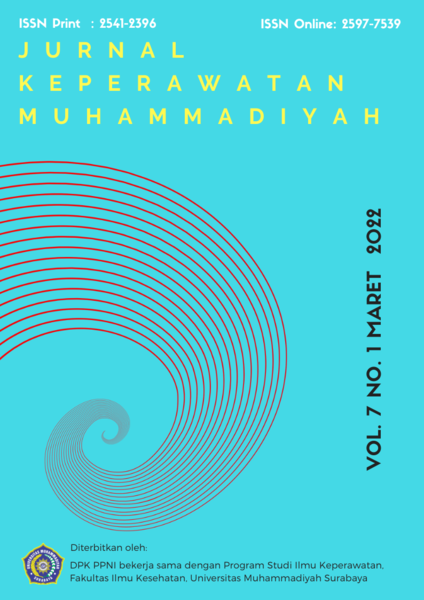Perbedaan Efektifitas Terapi Ultrasound Diathermy (USD) Dengan Low-Level Laser Therapy (LLLT) Terhadap Pengurangan Nyeri Pada Frozen Shoulder
DOI:
https://doi.org/10.30651/jkm.v7i1.10979Keywords:
frozen shoulder, ultrasound diathermy, Low-Level Laser TherapyAbstract
Objective: The purpose of this study was to compare ultrasound diathermy with low-level laser therapy in the reducing pain management of frozen shoulder.
Methods: This study  used a quantitative experimental quasi method with a two group pre-post test design. The study conducted in a RSUD Ibnu Sina Gresik. Ten patients with frozen shoulder with an age range of more than 40 years and pain scale with visual analogue scale (VAS) more than 6 were randomly assigned to ultrasound diathermy group or low-level laser therapy group. Study participant received five treatment sessions of ultrasound diathermy or low-level laser therapy over a period twice a week. Outcome measures were a score of VAS.
Results: For the 10 study participants were 6 women and 4 men, there were no between-group differences at baseline in VAS. At the end of the interventions the group showed a reducing pain. Normality test with Shapiro-wilk test, the data obtained from the treatment group are normally distributed. The test result show that the t-count value of sig. 0,649>0,05 so there is no significant difference between ultrasound diathermy and low-level laser therapy in reducing frozen shoulder pain.
Conclusion: Overall, treatment with ultrasound diathermy and low-level laser therapy has an effect on reducing pain in frozen shoulder patients at RSUD Ibnu Sina Gresik and there is no significant difference between ultrasound diathermy with low-level laser therapy.
References
Bryant, M. (2017). The effetiveneness of ultrasound guided hydrodistension and physiotherapu in the treatment of frozen shoulder/adhesive capsulitis in primary care : a single center service evaluation.
Elhafez, H. M. (2015). Axillary Ultrasound and Laser Combind with postisometric fascilitation in treatment of shoulder Adhesive Capsulitis.
Feng, C. L. (2019). Characteristics of pulsed- waveform and laser- doppler indices in frozen shoulder patients.
Hayes, K. W. (2015). AGENS MODALITAS untuk Praktik Fisioterapi Edisi 6. Jakarta: ECG.
Kim, S. H. (2015). Short-term effects of high-intensity laser therapy on frozen shoulder.
Mound. (2012). A Systematic Review and Cost-Effectiveness Analysis.
Robinson, C. M. (2012). Speciality Update: Upper limb Frozen Shoulder.
Zwaal, P. v. (2014). Orthopedic Reseach and Review: Management of the Frozen Shoulder.
Downloads
Published
Issue
Section
License
- Penulis tetap memegang hak atas karyanya dan memberikan hak publikasi pertama kepada jurnal ini yang secara simultan karya tersebut dilisensikan di bawah:Â Creative Commons Attribution-ShareAlike 4.0 International (CC BY-SA 4.0)













